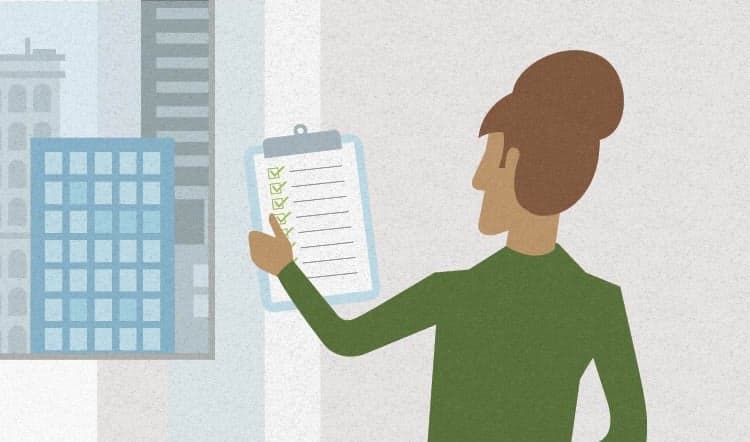9 step disaster recovery plan for your small business
There’s nothing more frustrating than doing everything in your power to be successful, only to see forces out of your control—such as a hurricane, a fire or cyberattack—suddenly render your business inoperable.
Meredith Wood
January 28, 2019•5 min read

What’s worse, disasters can have a devastating impact on small businesses. According to FEMA, between 40-60% of small businesses that suffer a disaster never reopen their doors, and 90% of small businesses that don’t reopen within five days of the catastrophe fail within a year. While larger companies have the time and resources to plan for and survive disasters, many small businesses have no plan in place for such a setback.
Therefore, it’s crucial that small business owners create and regularly update a disaster recovery plan. To avoid a business-breaking catastrophe, think of the following steps as a simple disaster recovery plan template.
1. Create an emergency response plan
When disaster strikes, what’s the first move? What steps should you and/or your employees take in the event of an emergency to stay safe? Once this has been determined, it’s important to decide what employees should do to prevent the loss of assets, inventory, and other property. There should also be a protocol of who to contact and in what order, including the authorities, yourself, and your security team (if you have one). Once you decide on and plan your protocol, assign responsibilities and hold regular training sessions so employees understand their duties.
2. Develop a business continuity plan
As noted above, resuming operations as soon as possible following a disaster should be considered essential.
A business continuity plan typically includes:
3. Review your insurance coverage
Insurance coverage is a must for any company, but not every kind of business insurance will be helpful in the event of a disaster. Review your current policy and ensure there are no gaps in coverage that could prevent you from collecting. For example, you should have sufficient coverage to pay for the indirect costs of a disaster (such as the disruption to your business) as well as the direct costs such as physical damages.
You can typically purchase additional insurance that protects your business against specific disaster risks in your area, like earthquakes or floods. You can also purchase add-ons that cover damages away from your premises, such as to your key suppliers.
4. Stockpile essential supplies
What will you, your employees, and your business need in the moments immediately following a disaster?
First, create emergency supply kits for your employees to grab in case of a disaster that threatens their physical safety, including bottled water, first aid, cash and device chargers.
Secondly, consider investing in backup systems that can get your business up and running immediately, like a secondary source of power or communications system.
5. Compile important contact information
Don’t wait until a disaster happens to hunt for key people and organizations to contact: Create a list now of who you should call after a disaster, including:
6. Create a communications strategy
When it comes to communicating with customers and clients about the state of your business, take every avenue possible. Go both low-tech – post notices outside your business, place a notice in the local paper, contact clients by phone – and high-tech by posting updates on all your social media channels and via your newsletter.
7. Report losses to the SBA
The Small Business Administration offers advice, access to resources, and aid to small businesses across the country – and that includes in the wake of disasters. Businesses of all sizes can borrow up to $2 million to repair or replace damaged or destroyed real estate, machinery or equipment, and inventory. The SBA also offers Economic Injury Disaster Loans up to $2 million to meet working capital needs.
If your business is in a declared disaster area, you can start the process of applying by visiting the SBA’s website.
8. Discuss logistics with your suppliers and clients
No business exists in a bubble: Your vendors or suppliers could also be affected by a disaster, disrupting your supply chain. Similarly, if you run a B2B business and act as a supplier to another company, your issues could cause problems for your clients.
Communicate with both ends of your supply chain about their own disaster preparedness and identify backup options so no dependent businesses are left high and dry. Unhappy clients may not return when you get back up and running but may be more likely to do so if you offer an alternative replacement supplier ahead of time.
9. Duplicate and backup records and data
You should have up-to-date duplicates of all your important records, contracts, and documents, and keep them off-site in a safe deposit box or secured in the cloud. Additionally, a backup and disaster recovery (BDR) solution can keep data safe from natural disasters as well as cyberattacks or hardware failure – by providing secure, continuous backup and rapid data restoration onsite and via the cloud. This is a good way to always keep your client’s important and sensitive data safe as well.
Conclusion
As a small business, disaster recovery plans can help to protect and insure yourself from the possibility of disaster. If you believe your business is at particular risk for disaster, you may consider enlisting the help of a disaster recovery consultant.
Investing your time and resources against a threat that may never come may feel like a waste – but each minute you spend preparing for a disaster is an hour you’ll save when issues do arise.
